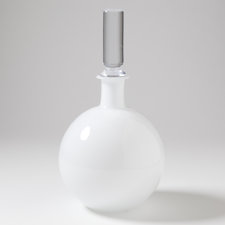
Why 68%? No reason really, I just adjusted the slider up and down until it looked right to me, and that happened to be at 68%. See how easy that was!? For this image, I changed the blend mode to Overlay and pulled the opacity slider down to 68%. If setting it to overlay looks too strong, but soft light looks to weak, just set the blend mode to overlay and adjust the opacity of the layer down until it look right. Adjusting this slider is just one more way to affect the outcome of how the texture will look. Opacity is another very useful tool at our disposal. If I want a more subtle texture, I’ll go with soft light.


For textures, I typically stick with either “Overlay” or “Soft Light.” If I want the texture to be more dominant in the image, I’ll go with overlay. Changing the blend mode of the texture will do something very different depending on what you choose. Another reason we can’t see the surfers yet is because the opacity of the texture is set to 100% and the blend mode is set to normal. That’s because the texture is on a layer of it’s own sitting above the image of the surfers, as seen on the bottom right of the screen. The first thing you should notice in the screen shot is that all we can see is the texture.
#Invert colors topaz studio full size
Just right click the image and view it in a new tab to see te full size version. To see more detail, I included larger versions as well. Note: Before we get into these screen captures, I know they may seem a little small and hard to read. Since I want to apply the texter to the image of the surfers, I need to place the texture as a layer above the surfers. With layers, anything on the top layer has precedence over whatever is below it. Layers and masking (among other things) are what make Photoshop such an incredibly powerful program, and these foundational skills will take you a long way in learning the program. Those are two key functions in Photoshop that I use every single time I’m in the program. If you’re new to Photoshop, you should make your number one priority this: Get familiar with layers and masks. Here’s the image straight out of the camera and the texture we will be using from my library… For this tutorial, I’ll take a simple image I took in California during a surf competition, and add a texture to bring it to life. The effect is achieved by changing the blend mode of the texture in photoshop so that the texture actually becomes translucent and part of the actual image. So, for those that have never heard of this before or have yet to try it, you may be wondering what it means to add a texture to a photograph? Simply put, it means taking one image (usually of some sort of texture like peeling paint, a scratched surface, a textured wall or fabric) and applying it as an overlay to your actual image.

Textures are just another one of those things in digital photography that can be overused and overdone if you’re not careful, and there are certainly right and wrong ways of going about it. Let me start off by saying that I don’t use textures all that often, but there are certainly times where I feel that an image could use just a little something extra.


 0 kommentar(er)
0 kommentar(er)
